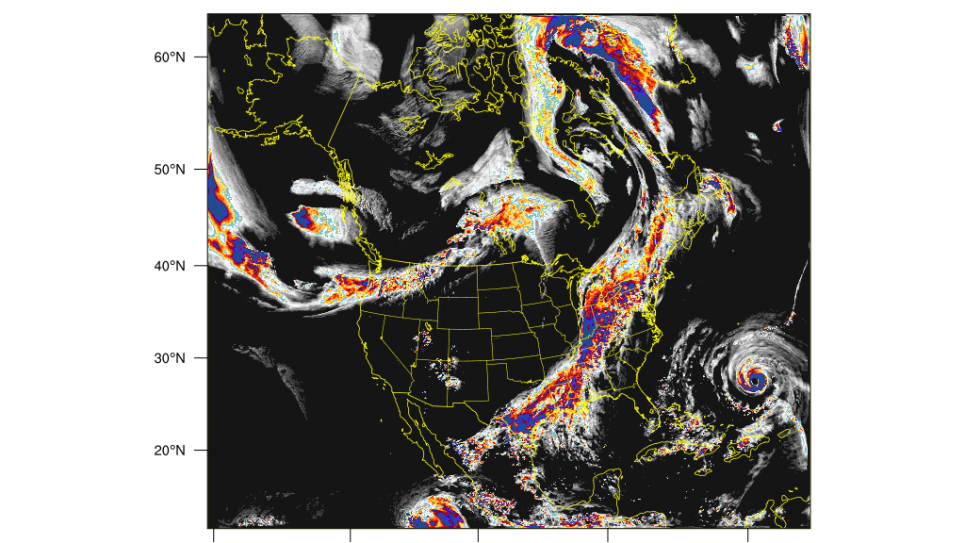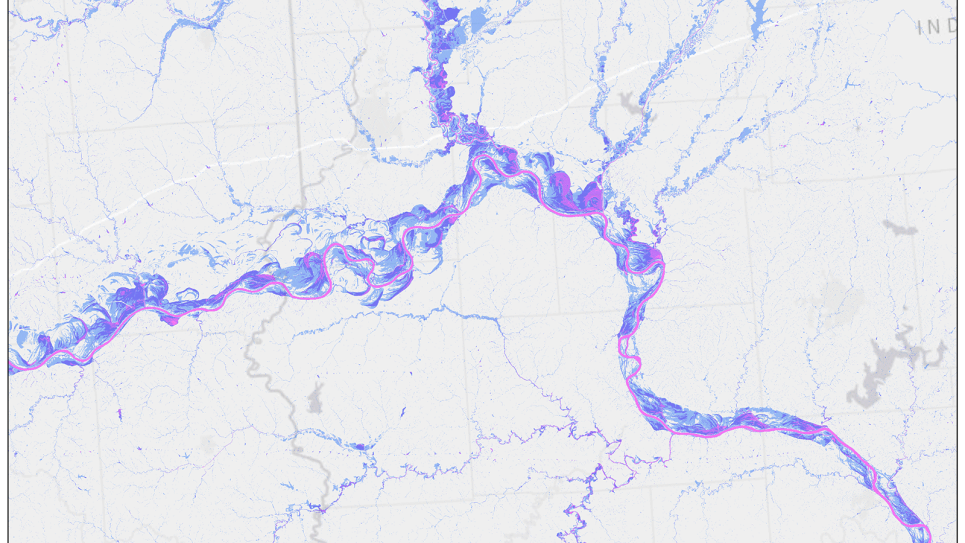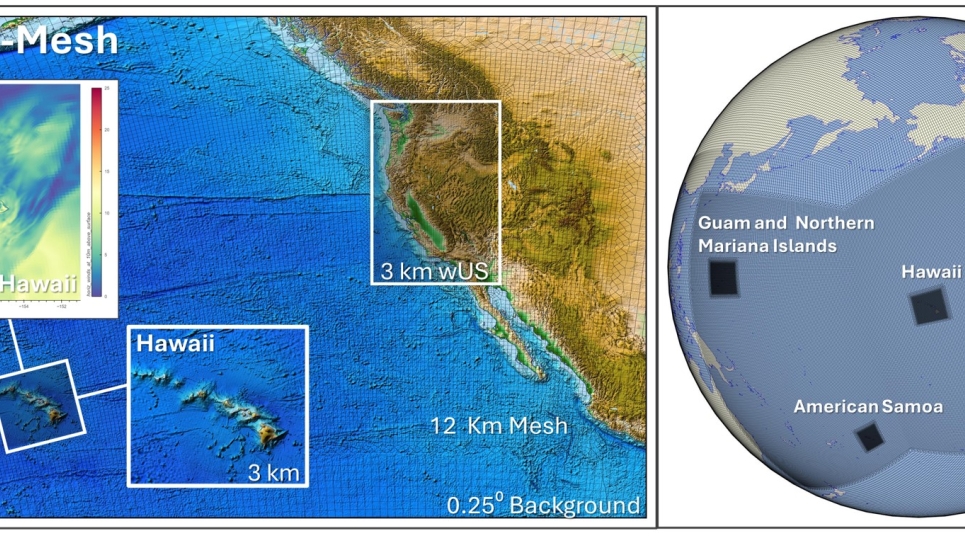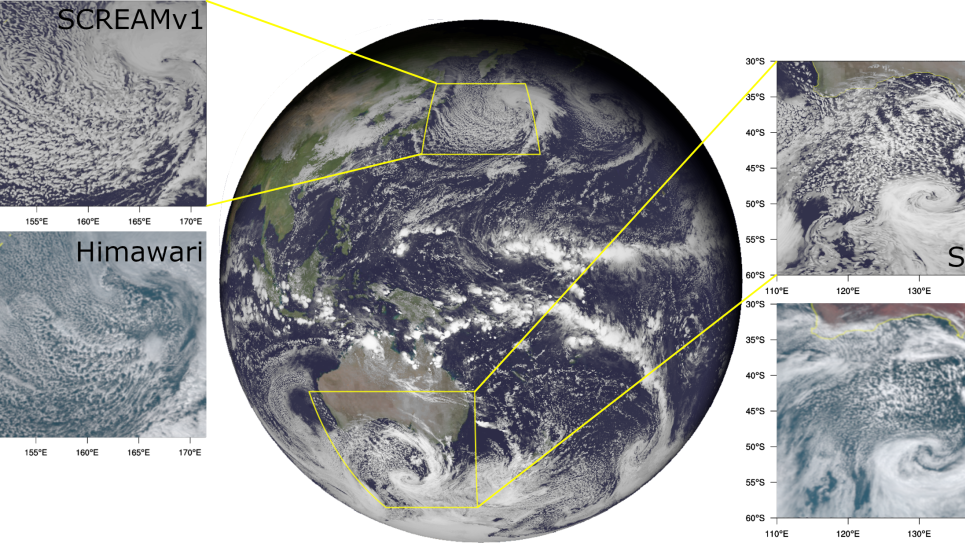
Cloud fraction from the convection permitting (4km horizontal grid resolution) decadal length simulations with the WRF model showing a single time slice at 00:00 UTC on September 3, 2003. The simulations are downscaled from the 30km spatial resolution ERA-5 reanalysis fields. The frame shows Hurricane Isabel to the east of the US. (Image: Chunyong Jung, Argonne National Laboratory)


